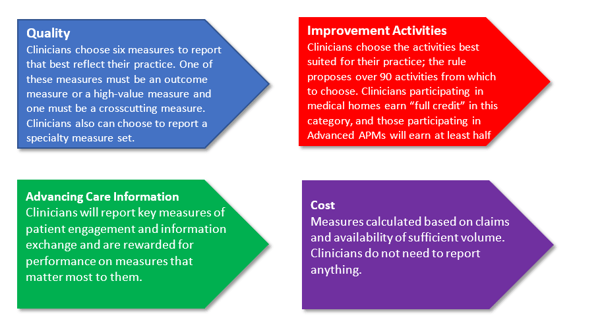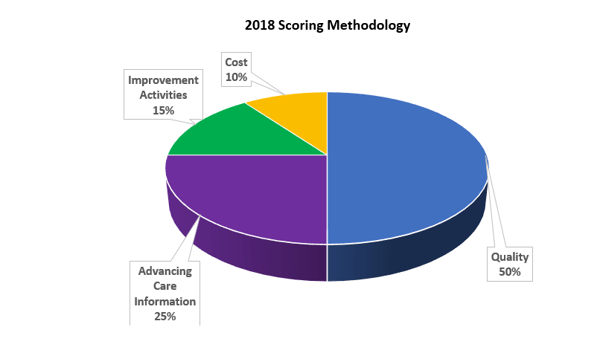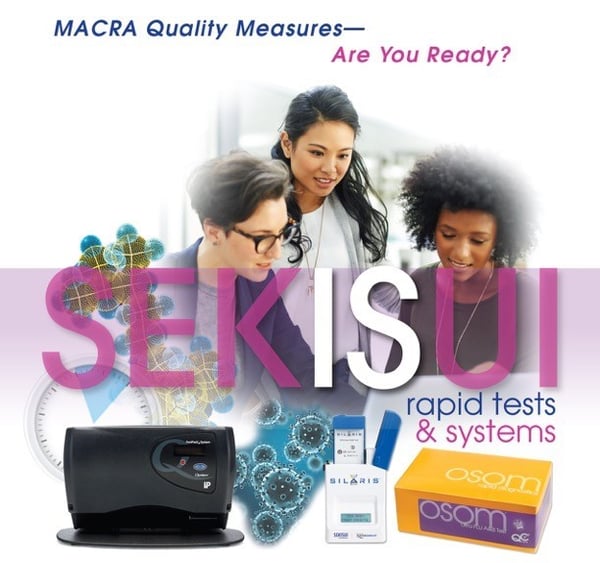 Hopefully you have the basics of MACRA mastered by now. As a refresher, the Medicare Access and CHIP Reauthorization Act changes how Medicare pays for physician services and repeals the Medicare physician sustainable growth rate (SGR) formula and instead provides predictable payment increases. If you need an additional review of the program, read last month’s blog.
Hopefully you have the basics of MACRA mastered by now. As a refresher, the Medicare Access and CHIP Reauthorization Act changes how Medicare pays for physician services and repeals the Medicare physician sustainable growth rate (SGR) formula and instead provides predictable payment increases. If you need an additional review of the program, read last month’s blog.
The “Ms” of the Alphabet Soup
MACRA is complicated, and a literal alphabet soup of new acronyms represent its different moving parts. Today, let’s focus on MIPS, or the Merit-Based Incentive Payment System. MIPS is one path of the two-path Quality Payment Program (QPP). This track combines parts of the Physician Quality Reporting System, the Value Modifier, and the Medicare Electronic Health Record incentive program into one single program and adds a fourth component to promote ongoing improvement and innovation to clinical activities.
Soup or Salad?
Under the QPP, all affected providers will have to choose either the MIPS or the APM track by January 2019. CMS predicts that most Medicare Part B clinicians will be subject to MIPS, rather than the APM track. Physicians that are in their first year of Medicare Part B participation, those that are below low patient volume threshold, and certain participants in advanced alternative payment models will not be subject to MIPS.
In 2018, MIPS eligibility includes physicians, physician assistants, nurse practitioners, clinical nurse specialists, and certified registered nurse anesthetists. In 2019, this list will be expanded to include physical or occupational therapists, speech-language pathologists, audiologists, nurse midwives, clinical social workers, clinical psychologists, and dietitians/nutritional professionals.
How MIPs Works
The combination of existing programs along with new measurements resulted in four performance categories:

The Math
A single MIPS composite performance score will factor in performance in the four weighted performance categories on a 0-100 point scale. Between 2019-2021, some of the performance categories will vary in how much weight they have in determining the overall score.

It’s Complicated
By now you may be feeling confused, bewildered, and overwhelmed, and we’ve only scratched the surface of the program! It’s okay, you’re not alone! Be sure to check out all the sources referenced in this article. CMS has a plethora of resources, including a QPP Resource Library that will offer even more insight.
Sekisui Diagnostics can provide a comprehensive product line for point-of-care testing and may be able to help you make improvements so that you’ll ace that performance score. Point-of-care testing in a physician office lab (POL) can improve two key MACRA objectives: outcomes and quality of care. You should consider bringing tests in-house and allow Sekisui Diagnostics to assist you in creating and running an effective POL.
Learn more about how our Strep, Flu, PSA and iFOB Tests can help you meet specific quality measures




Share Article